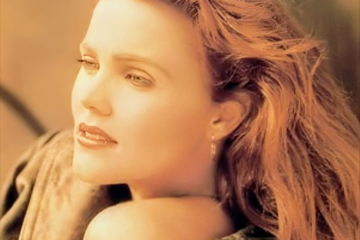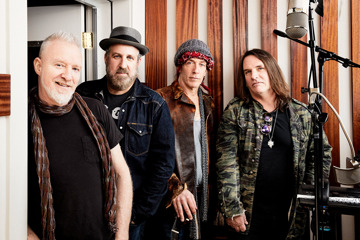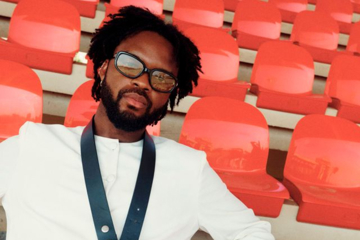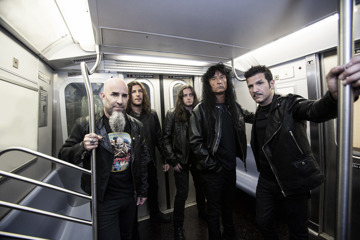Heroin, Punk, Pub Pop: How Men At Work Survived '80s Counterculture
An exclusive excerpt from 'Down Under' by Trevor Comony

Pic via YouTube

In this first of two exclusive excerpts from musician Trevor Comony's Down Under — which follows the plagiarism case against the song of the same name by Men At Work — the author sets the scene for the music landscape of 1980s Melbourne, in which a thriving counterculture and the ostensibly clean-cut pub-pop outfit co-existed — against all odds.
Men at Work had outgrown their Thursday night residency in Richmond. And, by the end of 1980, the publican was selling up, overwhelmed by the pressures of running a chaotic inner-city music venue in the midst of the ‘new wave’.
These were extraordinary days for Australia’s rock scene all over. In Melbourne, Sydney and Brisbane in particular, a wealth of musical imports from the United States, the United Kingdom and Europe crossed paths with a number of local and expat New Zealander faves heading overseas to try their luck. The Saints and Nick Cave were the aggressive, post-punk representatives, while the Go-Betweens, Mi-Sex and Split Enz led the new wave pop charge. Around this time, rock venues – or at least the TV studios in the capital cities – would host big names like the Ramones, the Cure, the Stranglers, Blondie and Devo. Aussie musos and punters were lapping it up all over.
Don't miss a beat with our FREE daily newsletter
The biggest Australian acts of the mid-to-late seventies – Cold Chisel, AC/DC, the Angels, Midnight Oil, Skyhooks, Split Enz, Dragon, Mondo Rock – were almost matching their overseas contemporaries as radio staples and could easily fill the beer barns of Aussie suburbia. They’d largely come out of a tradition of solid musicianship combined with strong songwriting and audio production skills. Not only did these bands reign on the Aussie content stations, and in the local singles and albums markets, but they could also deliver their songs on stage with the fidelity of the recorded versions.
No Australian acts, however, would have achieved their huge market penetration were it not for two branches of our influential national broadcaster, the ABC. Whether by coincidence or through deliberative administrative intent, it was good news for Aussie rockers when both the state-funded television channel and a new government-run radio station got into the youth music business at the same time. (To this day, almost every Aussie pop and rock artist who has made a living out of original music owes a debt of gratitude to the public purse.)
In late 1974, ABC TV Channel 2 launched Countdown, a Melbourne-based weekly pop television extravaganza whose charter included boosting the profile of local musicians and performers. Under the direction of record producer and journalist Ian ‘Molly’ Meldrum, and airing at 6pm on Sundays, the program was the right product and well placed to attract young fans. Half a decade before the proliferation of recording technology that allowed the flourishing of music video (MTV-style) programs, Countdown relied at first on ‘live’ performances of current pop hits to fill out its hour-long format. Instead of being presented with a series of image-massaged arty film clips, the Countdown audience in the studio and at home around the country would watch their favourite acts doing awkward mimes in front of star-struck teens. Mixing interviews, news items and these soundtrack-synched stage appearances, the show became Australia’s most popular ever music program.
Around the time Countdown began airing, a new ABC radio broadcaster received its licence in Sydney. Youth-oriented 2JJ planned to offer a bold challenge to the near monopoly of commercial station 2SM on the youth music marketplace. In the nation’s largest city, this meant that rock enthusiasts would now have access to sounds that hadn’t been vetted by industry players beholden to advertisers. Australia’s other urban centres would still have to rely on niche community radio stations to fill this ‘alternative music’ role until, a decade and a half later, 2JJ morphed into the national broadcaster Triple J.
Within the arts in general, Australia’s self-diagnosed cultural cringe had been on the mend for some time. Independent theatre companies were becoming more and more confident of mounting at least some home-grown productions among the canon of British and American classics. Critically acclaimed works were also on the increase in the Australian cinema industry as the much-welcomed, private film-financing 10BA tax deduction scheme kicked in. While this national positive mood change hadn’t yet been converted into foreign currency in the arts exchange, it wouldn’t be long before Aussie actors, directors, writers, producers and musicians began popping up overseas. By 1980, locals had thoroughly embraced the Melbourne Symphony Orchestra and any play by David Williamson. We were justifiably proud of Picnic at Hanging Rock, My Brilliant Career and Breaker Morant, and were amazed as ‘redneck’ Brisbane and isolated Perth and Adelaide continued to produce good new rock groups. Soon the rest of the world would catch on as well.
Australia’s biggest musical exports at this time were AC/DC, Air Supply and the Little River Band. Although different in style, they’d each developed a knack for melodic songwriting over their formative years. Being Countdown-friendly fodder didn’t hurt their careers either. Certainly for a band to reject – or worse, be ignored by – Molly Meldrum’s long-running show could be the kiss of death. Most groups would have sold their souls to get in front of those cameras. Of course, a few revelled in contrariness, seeing Countdown’s charter as antithetical to the avant-garde. But by 1980 the ‘uglier’ punks and hairy old rockers were being pushed aside by those nicer new wave popsters who’d learned how to play along with Molly. A clean, safe-looking band like Men at Work would have no trouble at all.
Following the Vietnam War and the return of servicemen from South-East Asia, heroin and marijuana had become cheaper and more accessible. Whether promoted in slacker movies like Cheech and Chong’s Up in Smoke or through counter-culture magazines and by icons such as the outrageous surf-pig, Captain Goodvibes, marijuana was seen as harmless. Heroin, though always viewed as ‘heavier’, was nevertheless a constant background feature of inner-city grunge cultures, particularly in Sydney and Melbourne.
Musicians of the late seventies couldn’t avoid living in and around the heroin scene, even if they themselves weren’t users. It wasn’t just the punks, either. Thanks to the behaviour of stars like Lou Reed, Keith Richards and the charismatic if self-destructive local rocker Marc Hunter, being a heroin user might give you real street cred – providing it didn’t kill you first. Certainly drugs weren’t always associated with glamour, and it was almost inevitable that the commerce of illicit substances would come to occupy the spare time of many less affluent and unemployed young people as well.
Despite their clean Countdown image, many of the musicians who appeared on the teen-oriented television program were rumoured to be users of one or more types of illicit substance. Not that the ABC was promoting that aspect of rock’n’roll to our youth. Like the issue of homosexuality at the time, it was a case of ‘don’t ask, don’t tell’. Besides, even though it was illegal to possess it, marijuana wasn’t a big deal – no pun intended. At a pub gig it wasn’t uncommon to smell burning weed wafting in from the beer garden, while at big outdoor shows grass was everywhere and not just for sitting on.
In a filmed interview, Colin Hay recalled the early days of Men at Work, playfully mentioning how he could usually find his bandmate Greg Ham at home in the back room ‘on drugs’. Hay gets mileage too from an anecdote about a goat that he and his housemates in bayside Sandringham – a few suburbs along from St Kilda – acquired for its alleged lawn-mowing function. As the story goes, the goat had little interest in maintaining the messy yard, preferring to come inside the house and get ‘really fucking whacked on second-hand marijuana smoke’.
Grass, hash, speed, LSD and heroin were easy to find in places like Sydney’s Bondi and Kings Cross – pub-heavy areas popular with musicians. Down south, as Melbourne’s Nick Cave recalls in the documentary film Autoluminescent, heroin was a big part of the St Kilda social scene at the time. Paul Kelly, perhaps Australia’s greatest modern minstrel and musical storyteller, has talked about his debilitating involvement in the drug culture there during the late seventies and early eighties. Smack was all over the country, of course, and as a tearful televised confession from our parliamentary leader Bob Hawke a few years later revealed, even the prime minister’s daughter was on it.
Freedom and fear were twin threads among the stories of the counterculture, the dropouts and the unemployed. Throughout the latter part of the Fraser era too, it wasn’t uncommon for jobless young adults to feel that malevolent forces might be conspiring against them. And this wasn’t just a result of the notorious cannabis paranoia syndrome – visits from officers of the Social Security Department were newly instituted.
At any time during the daylight hours of the working week, a pair of suits from the local bureaucracy might appear at the front door for a quiet interrogation about the indolent resident’s job-seeking efforts. Sleeping in on a weekday was frowned upon, to say the least. Anyone on unemployment benefits might also be subject to further scheduled intrusions, during which officers could invite themselves into the premises and walk through the bedrooms, gaining clues about how many people were actually living in the house.
While these were never pleasant episodes, they could provide material for a sensitive writer. On this note, while the lyrics of Men at Work’s first big hit, ‘Who Can It Be Now?’, are ostensibly about mental illness, agoraphobia and unwanted night-time callers, no song better sums up the wretched anticipation of those in line for a Social Security home visit.
While the economic outlook was far from rosy, things weren’t yet as bleak in the late seventies job market as they would become during the eighties. Those youth who weren’t occupied with gaining trade or professional skills at the turn of the decade could put their spare time into DIY projects. Musicians, for instance, do need time to practise their instruments and write their songs. Given the nature of this enterprise, it’s often something better done during the daytime when nine-to-five neighbours won’t be disturbed. Foregoing the luxury of a regular income is part of the trade-off for any player; indeed taking on the dreaded ‘day gig’ with its promise of steady financial reward can become a kind of Faustian pact for the artist. As Ham explained, he had ample time to learn sax, flute, blues harp and keyboard because ‘he was on the dole and had nothing better to do’. Given cheap or free accommodation and a basic allowance supplemented by a little casual income, your average rocker could easily get it together in those days.








